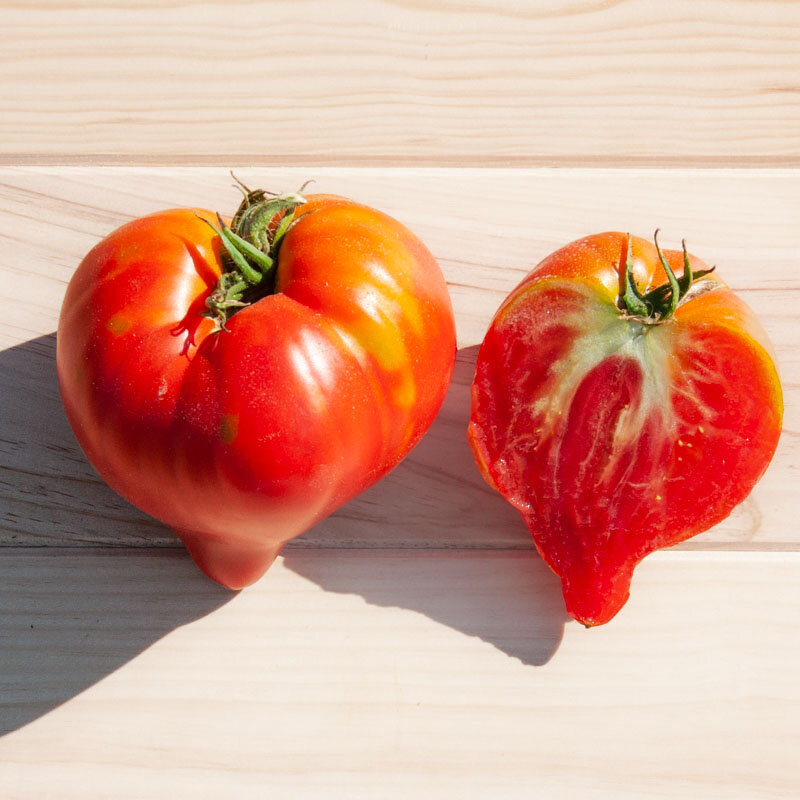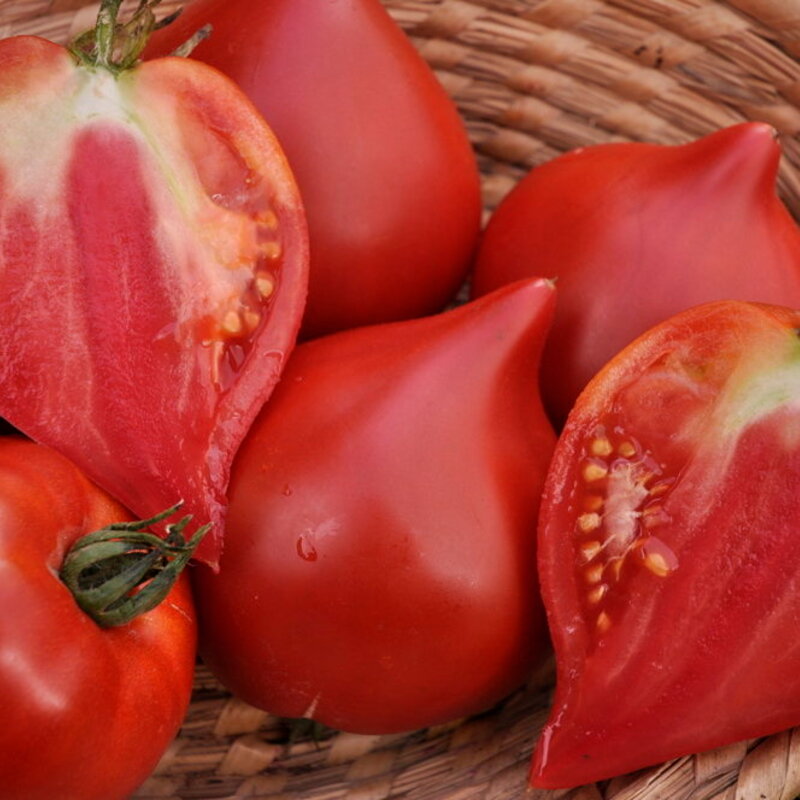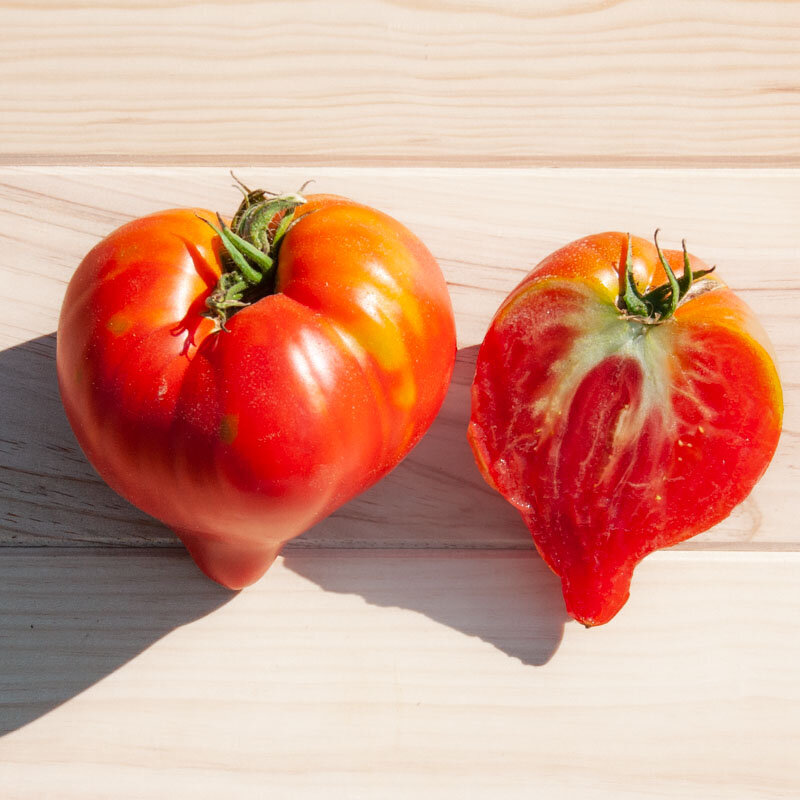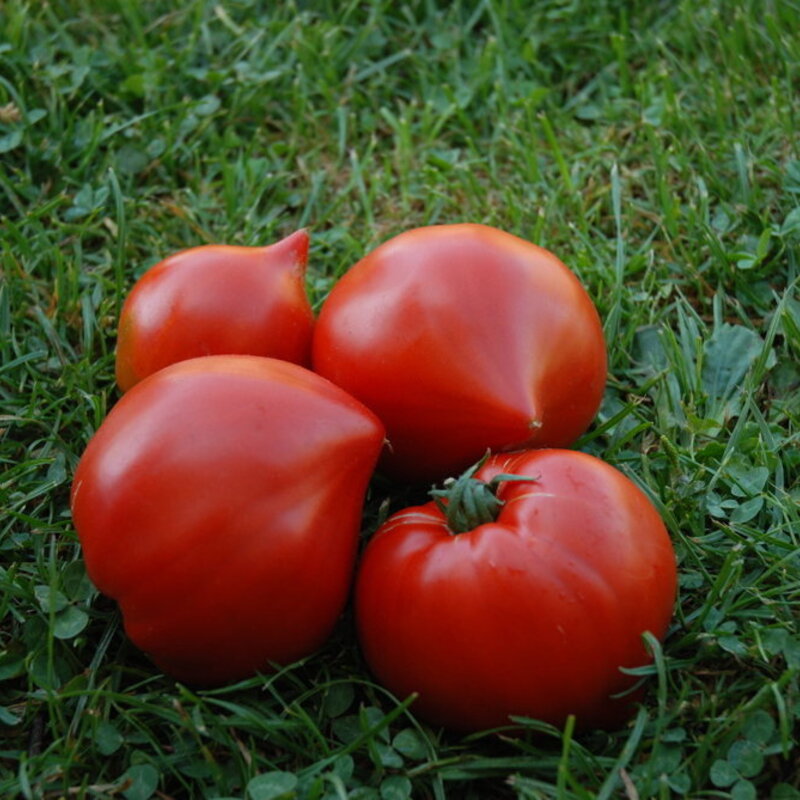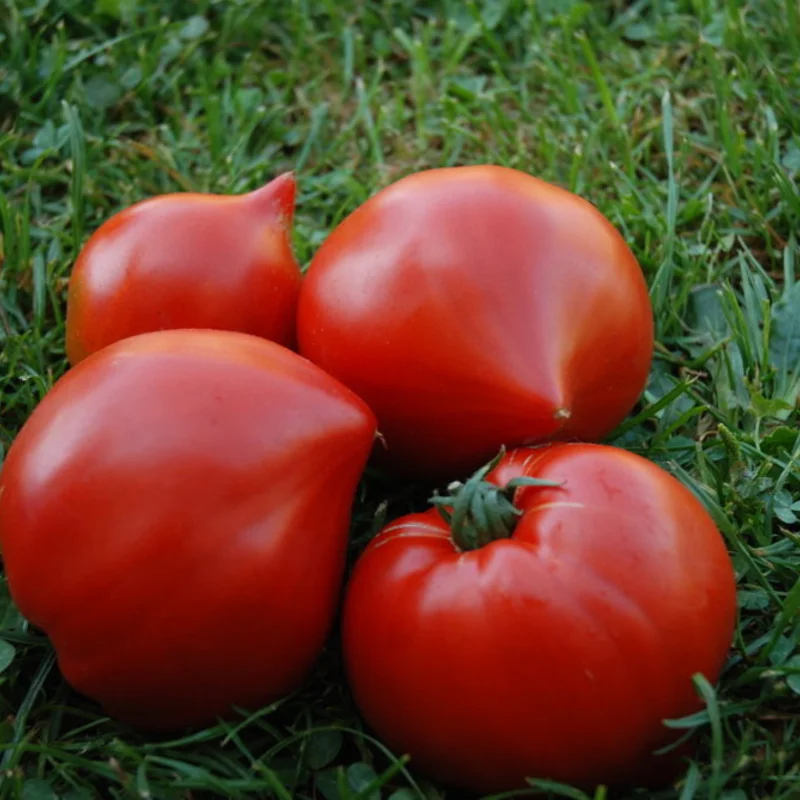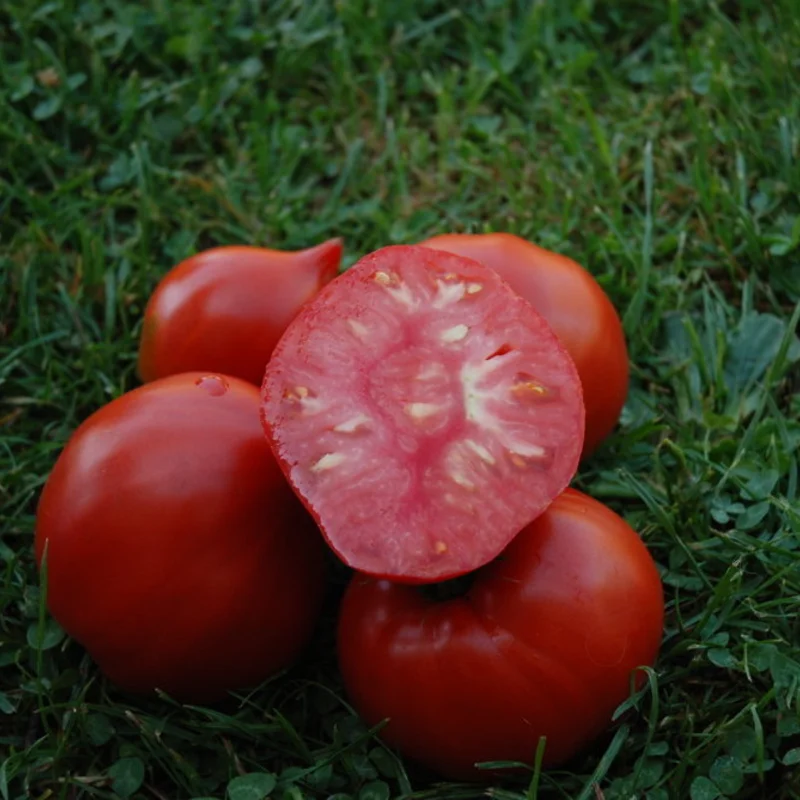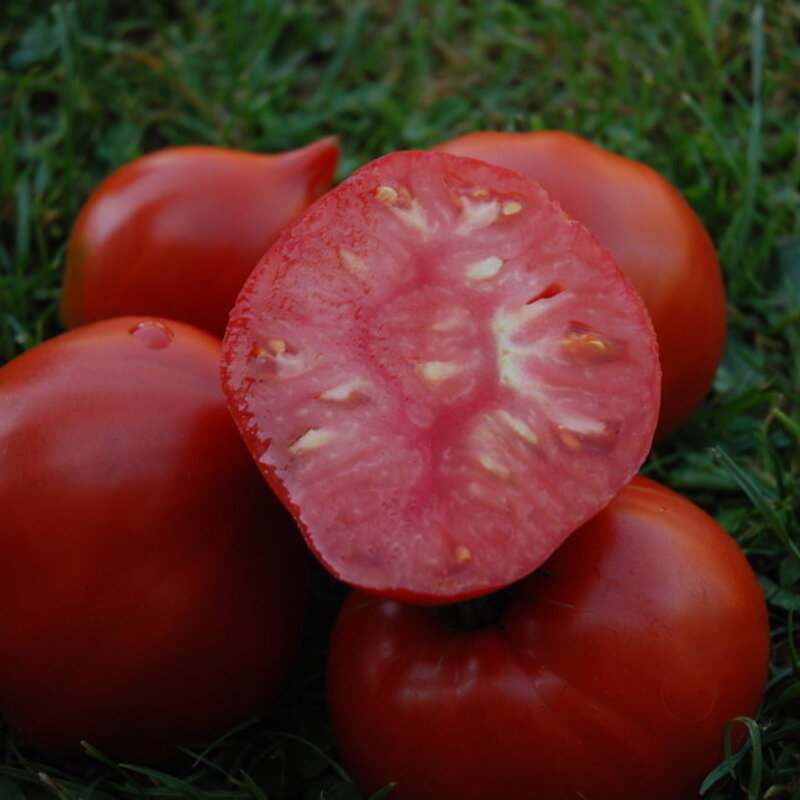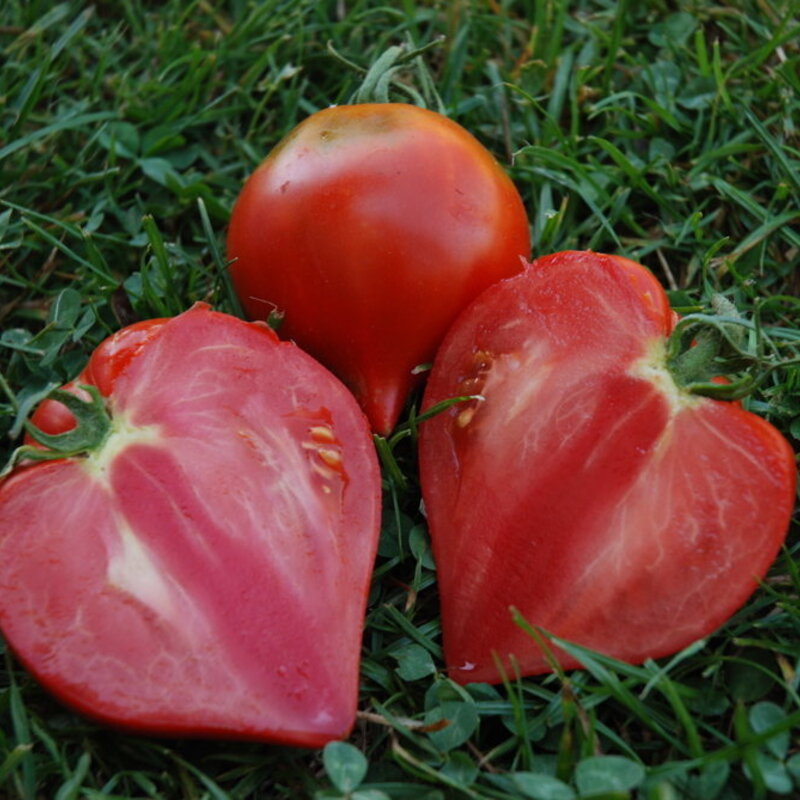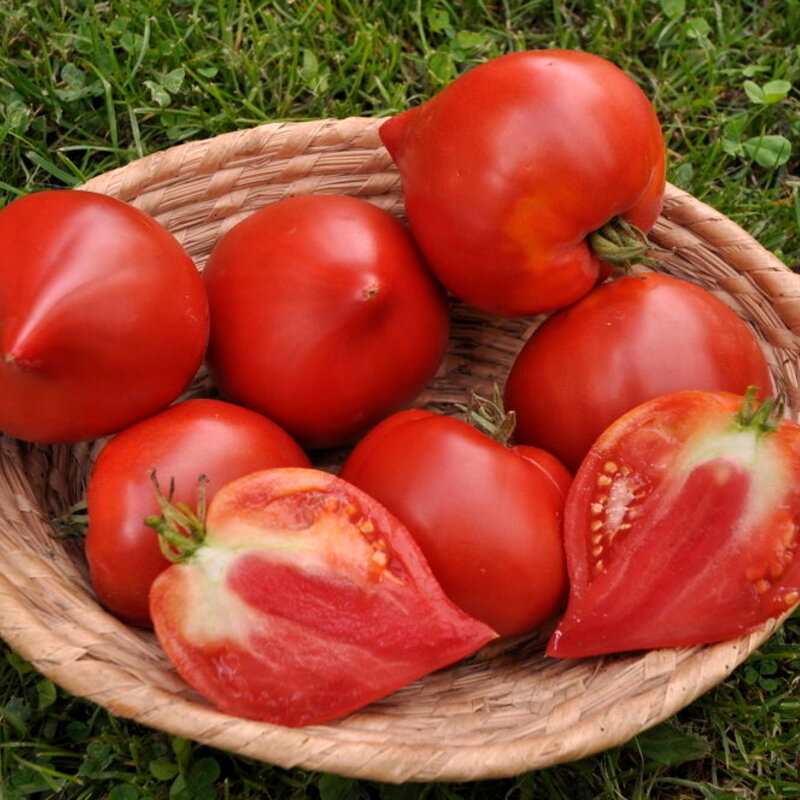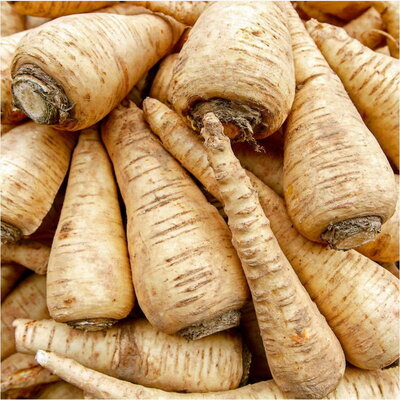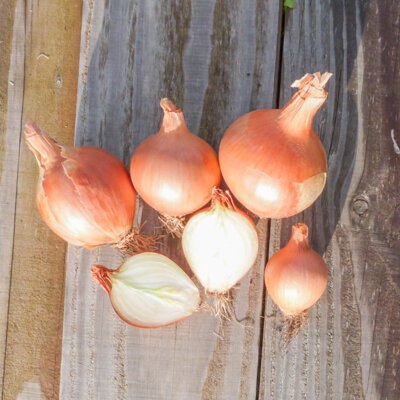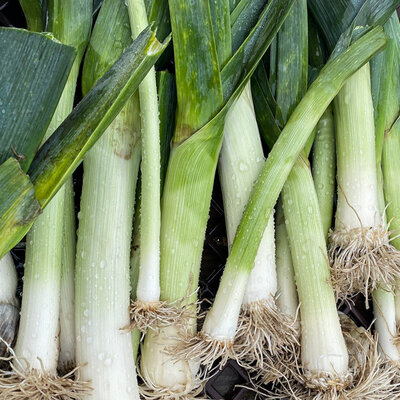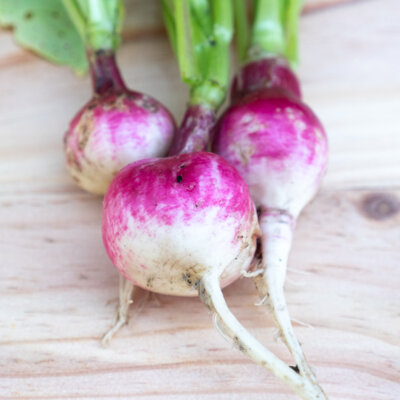Venus nipple - Red Mid-season Tomato
The Téton de Vénus tomato is a variety with drooping foliage that produces bright-red, pointed heart-shaped fruits weighing 70-300 g on slender stems. Suitable for drying, they contain few seeds and have melting flesh.
Characteristics of the Téton de Vénus tomato
The Téton de Vénus tomato, Solanum lycopersicum, is an old mid-season variety from Italy. It owes its name to its distinctive "oxheart" shape, which is round and slightly elongated, ending in a pointed tip. Its red fruits, weighing from 70 to 300 g, contain firm, dense flesh with a mild, sweet flavor and melt-in-the-mouth texture.
Téton de Vénus tomato seedlings
Téton de Vénus tomatoes can be sown from the end of February under glass until April, in pots or in trays, under a very bright shelter and at a temperature between 16 and 20°C.
- Bury seeds 5-7 mm deep in potting soil;
- Water the seedlings, but do not over-water;
- Grow tomatoes indoors under a light source or in a nursery;
- Transplant into pots when the tomato reaches the stage of 2 to 4 true leaves. Bury the stem up to the two cotyledons to encourage root development and keep the plants protected from the cold;
- For 4 to 7 days before planting, take the tomato plants outside during the day to acclimatize them to outdoor conditions;
- As soon as the tomatoes are strong, transplant the whole clod into the vegetable garden, in full sun, after the last frosts. Greenhouse plants can be transplanted when indoor temperatures no longer fall below 10°C;
- Keep a minimum distance of 50 cm between plants, burying the stem up to the first leaves;
- Water tomatoes abundantly when planting in the vegetable garden.
Tomato plant care
The Téton de Vénus tomato has an indeterminate growth habit. The stem continues to lengthen, forming numerous lateral branches, all of which produce flowers. Pruning is not recommended. Pruning can cause open wounds to the tomatoes and encourage the spread of disease. For staking, these bulky plants can be kept in cages or on ladders.
To avoid fungal diseases such as mildew or apical necrosis, we recommend regular, but not excessive, watering of tomato plants, without wetting the leaves or flowers. You can also mulch the soil to conserve moisture, and use organic preventive treatments such as nettle purin and comfrey.
Tomato companion plants
In the vegetable garden, tomatoes enjoy the company of cabbage, lettuce, cucumber, tagetes and basil, which repel pests and improve yields. However, we advise against combining potatoes and eggplants with tomato plants.
Harvesting Venus Teton tomatoes
These tomatoes are harvested from June to October. This is a crop that offers an abundance of fruit per plant in one season. Raw, they are delicious in carpaccio with a drizzle of olive oil and fresh basil. Cooked, it can be stuffed or puréed. Its abundant, not very juicy flesh makes for a creamy sauce. This tomato is also suitable for drying.
These products may also be of interest to you
in bucket
Sow in pots at a temperature of between 16 and 20°C, under a well-lit shelter, 5 weeks before planting. After the last frosts, transplant the whole clump into the ground at a minimum distance of 50 cm, burying the stem up to the first leaves. Water abundantly at the time of planting.
Solanaceae need light and heat to produce. In cool climates, it's best to grow them under cover and, depending on the soil, water them regularly.
February, March, April
June, July, August, September, October
in the ground, in the greenhouse
full sun
medium
all floor types
drained, rich, reheated
Solanum lycopersicum
mid-season
From 70 to 300 g
35 seeds
beef heart
fleshy
indeterminate
Red
regular
Italy



